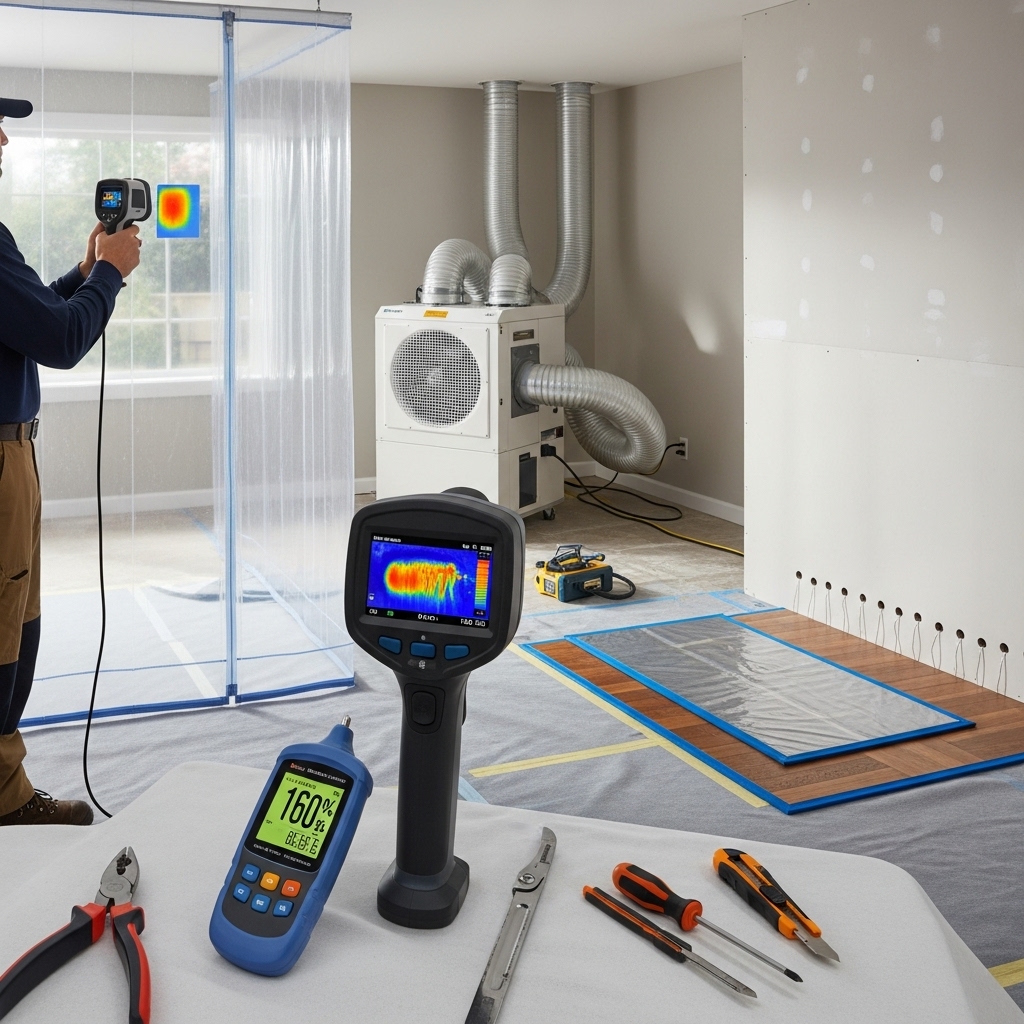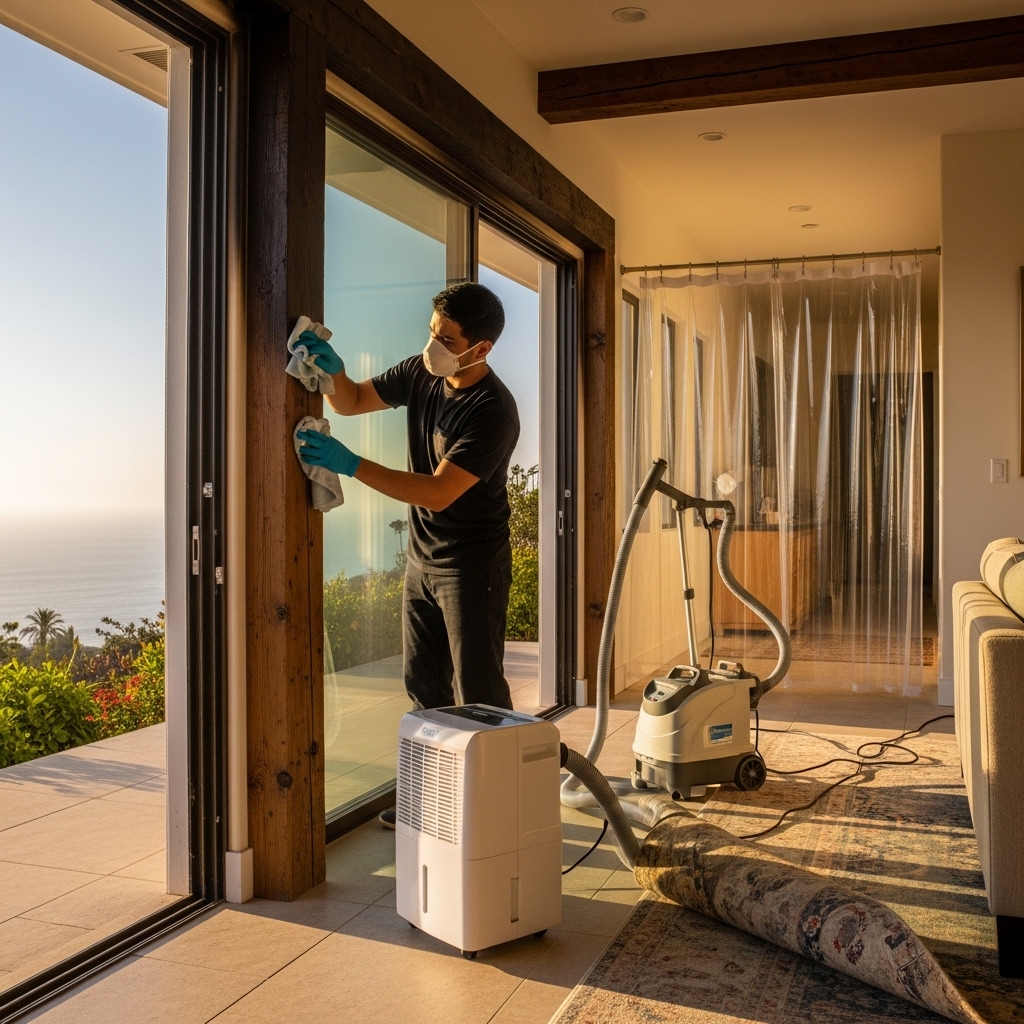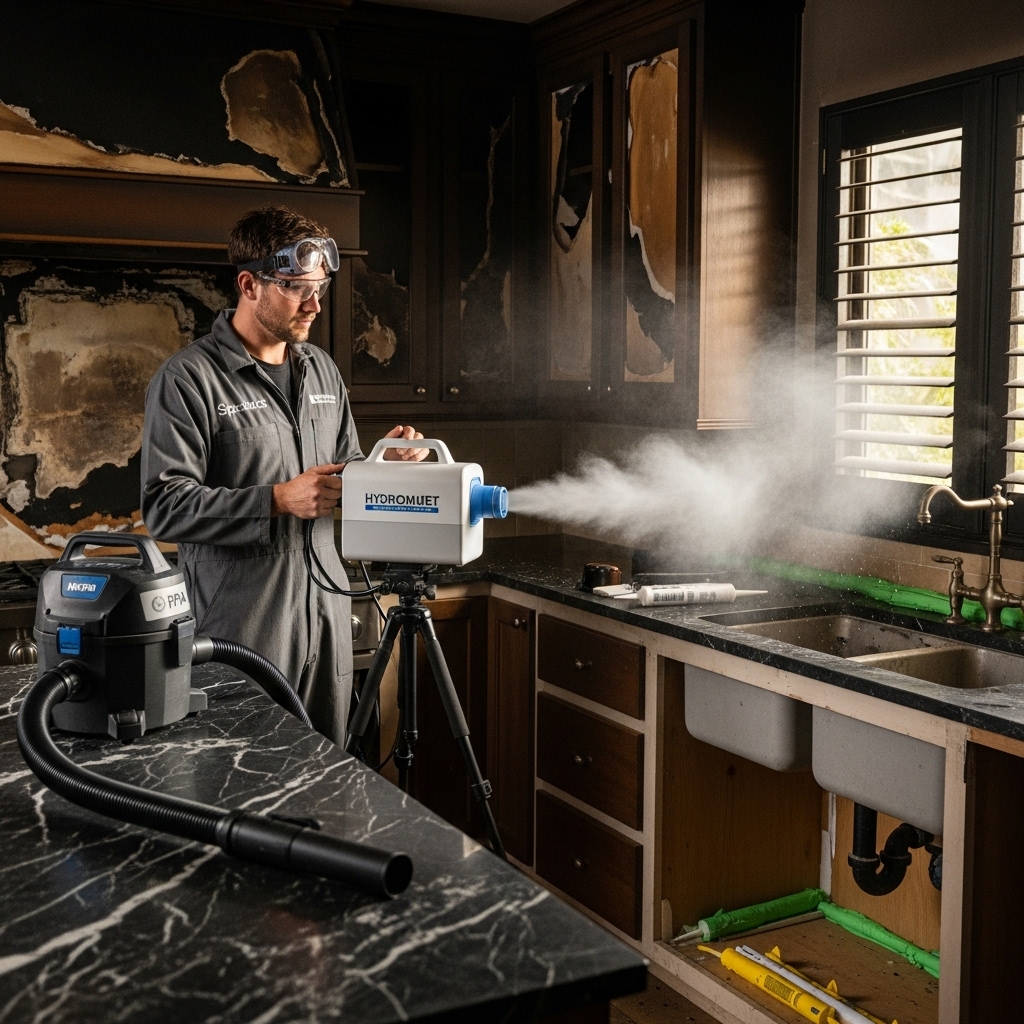Basic cleanup and drying can solve many small water problems, but complex situations call for advanced techniques that protect structures, shorten downtime, and improve long-term outcomes. In Canoga Park, a neighborhood with diverse construction styles—from slab-on-grade single-family homes to multi-unit buildings with shared walls—specialized methods can make the difference between a patchwork fix and a thorough, lasting restoration. The following guide explores the tools, strategies, and decision points professionals use when stakes are high. If you face a challenging loss, bringing in expert water damage restoration early can prevent secondary damage and preserve materials others might write off.
High-Resolution Moisture Detection
Accurate moisture mapping is the foundation of an advanced response. Pin and pinless meters reveal material moisture content, while thermal imaging shows temperature anomalies that often correlate with hidden dampness. Inspectors compare suspect areas to confirmed dry zones to establish a clear perimeter of the affected space. In stucco-clad exteriors common to Canoga Park, imaging helps locate small penetrations where wind-driven rain bypassed flashing and entered wall systems.
Beyond detection, the frequency of monitoring matters. Daily or twice-daily readings allow for fine-tuning equipment placement, airflow direction, and dehumidifier capacity. When data shows a plateau in drying, it is time to change the plan—add negative pressure, increase grains-per-pound removal capacity, or open additional cavities.
Creating Pressure Differentials
Negative pressure containment isolates wet zones and captures aerosolized particles during demolition or aggressive air movement. By exhausting air from the affected area through HEPA filtration and maintaining a slight vacuum relative to adjacent rooms, you prevent cross-contamination and keep dust confined. Positive pressure has its place as well, especially for forcing dry air into cavities through controlled injection systems.
Doorway zipper walls and sealed penetrations help maintain the pressure balance. In multi-family buildings, pressure strategies are especially important to protect neighboring units and common hallways during mitigation.
Desiccant Versus Refrigerant Dehumidification
Refrigerant dehumidifiers excel in warm, humid interior conditions, while desiccant systems shine when temperatures are cooler or when very low humidity is required for dense materials like hardwoods and plaster. A hybrid setup often delivers the best results: use refrigerants to handle bulk moisture loads and a desiccant to drive the final push toward low equilibrium relative humidity, extracting bound water from stubborn materials.
Tracking psychrometric data—temperature, relative humidity, and grains per pound—guides these choices. The goal is to create conditions that encourage moisture to leave materials and enter the air stream where dehumidifiers can capture it efficiently.
Flooring Rescue Techniques
Hardwood floors respond well to drying mats that draw vapor through board seams, reversing cupping when addressed promptly. Subfloors beneath vinyl or laminate may require strategic openings to allow airflow. Tile assemblies on concrete slabs can trap moisture; removing a small section of grout and using directed air movement at the perimeter can speed evaporation without full removal.
Where adhesives are water-sensitive, careful testing determines whether a floor can be saved. When salvage is possible, a controlled, gradual approach preserves finishes and minimizes post-dry refinishing.
Wall Cavity And Cabinet Drying
Instead of removing large sections of drywall, small weep holes at the base allow for air circulation into wall cavities. Specialized injectors can deliver either negative or positive pressure through those ports. Cabinets respond to similar tactics: remove toe-kicks to create access, then use low-profile air movers or injection hoses to dry the voids without dismantling the entire assembly. These methods reduce demolition, control costs, and shorten rebuild time.
Antimicrobial And Odor Control Strategies
Advanced projects often involve multiple layers of sanitation. Selection of solutions depends on water category and material compatibility. After bulk cleaning, fogging or directed application can reach complex surfaces. Odor control pairs source removal with counteractants designed for water-related smells. Persistent odors after drying may indicate hidden moisture; tools like borescopes help confirm that cavities are truly dry.
Structural Drying Of Dense Materials
Plaster, masonry, and thick timber demand sustained, controlled conditions. Desiccant dehumidification combined with heat can mobilize bound water without overheating finishes. Monitoring is critical—dry too fast and you risk cracking or warping; too slow and you extend downtime. The balance is achieved by incremental adjustments informed by daily measurements.
Mid-Project Optimization
Advanced drying is as much about measurement as machinery. At the midpoint, analyze your log: Are readings trending or stalled? Are there outliers—one wall that will not come down, a corner that stays cool on thermal imaging? Consider a targeted intervention such as cavity opening, increased air exchange, or a switch in dehumidification approach. Collaboration with a team highly experienced in water damage restoration can reveal efficiencies and save materials you might otherwise remove.
Multi-Unit And Commercial Complexities
Shared walls, common areas, and access constraints make planning crucial. Coordinate schedules to minimize disruption, notify neighbors and property managers early, and document unit-to-unit conditions to establish responsibility. Pressure control, equipment placement, and containment design must account for egress routes and fire safety. When work spans nights or weekends, create a monitoring plan that keeps critical equipment running and protected.
Post-Dry Verification And Prevention
Verification goes beyond a single good reading. Confirm dryness across materials and locations, compare to dry standards, and document results with photos of meter displays and the exact measurement points. After restoration, strengthen resilience: insulate vulnerable supply lines, install leak detectors near water heaters and washers, clean gutters and downspouts, and schedule roof inspections before rainy seasons.
Frequently Asked Questions
Q: How do I know when advanced methods are necessary? A: Indicators include persistent high readings despite basic drying, complex assemblies like plaster over lath, valuable finishes you want to save, or multi-unit situations with containment needs.
Q: Can I rent advanced equipment and do it myself? A: Some tools are available to rent, but results depend on correct sizing, placement, and monitoring. Without experience, it is easy to stall drying or overlook hidden moisture.
Q: Will desiccant dehumidification damage finishes? A: When applied correctly and monitored, desiccants are safe and effective. The key is controlled conditions and incremental adjustments.
Q: How long do advanced projects take? A: Timelines vary widely with materials and scope. Robust monitoring and mid-course adjustments keep the schedule efficient.
Get Expert-Level Results
If your project involves dense materials, valuable finishes, or multi-unit coordination, you will benefit from seasoned guidance. Protect your property, reduce disruption, and shorten downtime by scheduling professional water damage restoration that applies advanced techniques with precision and care in Canoga Park.


